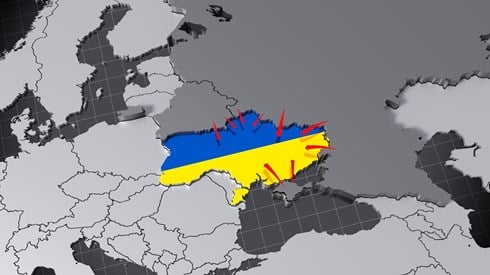Report Says April 1 Reinsurance Renewals Demonstrated "Orderly Calm"

April 20, 2022

After further strengthening their financial positions with continued improvements in terms and conditions at January 1 renewals, reinsurers approached April 1 renewals with many still seeking top-line revenue growth, according to a recent report from Gallagher Re.
The report, Gallagher Re 1st View: Balanced Renewal (April 1, 2022), notes that reinsurers ended 2021 with improved financial performance and significant growth in their return to shareholders. Even after dividend and share buybacks, overall industry capital showed a respectable increase, Gallagher Re says.
The Gallagher Re report describes the April 1 reinsurance renewals as demonstrating an "orderly calm," with reinsurers building on the pricing and condition improvements they achieved across nearly all contracts at the January 1 renewals.
"Some of the world's largest reinsurance capacity buyers secured renewal at acceptable terms, though there was limited demand for additional cover to truly test capacity risk appetite of the global reinsurance market," the Gallagher Re report says.
The report notes that the April 1 renewal period is driven largely by Japanese renewals. Those renewals have seen substantial rate increases in recent years following recent major catastrophe losses, steady improvement in original property rates, and no reductions in original earthquake rates, Gallagher Re says.
"This led to an orderly and less tense renewal in Japan, but elsewhere pockets of difficulty were seen in certain classes (e.g., Marine and Marine Retro, Aerospace)," the report says.
Gallagher Re says that capacity remained sufficient in most lines to allow reinsurance buyers to meet their requirements. There were, however, signs of some reinsurers adjusting their appetites for catastrophe risk by moving capacity to higher attaching layers or in some cases reducing the capacity they deployed to the exposure, the intermediary says. Those adjustments were offset by modest increases from other reinsurers looking to build out portfolios, the report says.
Reinsurers' appetite for cyber-insurance business in Japan remained fairly stable at April 1 renewals, Gallagher Re says, with some reinsurers reducing capacity while others looked to grow. Primary cyber-insurance rates remain fairly stable in Japan, the intermediary says, though there was an increase in loss activity over the last 12 to 18 months.
Reinsurers did direct greater scrutiny to Japanese cyber-reinsurance buyers due to those increased loss levels, Gallagher Re reports, though programs continue to perform well with loss ratios remaining below the global level of approximately 60 percent.
In the United States, reinsurers demonstrated continued scrutiny on lower attaching excess of loss renewals, given recent loss experience, particularly from secondary perils, Gallagher Re says. In general, reinsurers focused their capacity at higher attachment points, the report says.
"Catastrophe aggregates, particularly earnings-protection covers, continued to be a highly scrutinized product due to loss activity, particularly from poorly modelled perils," Gallagher Re reports. "As a result, capacity was reduced, notably from the collateralized market."
Reinsurers frequently deployed US capacity toward buyers with histories of profitable results, long-standing relationships with their reinsurers, and strong balance sheets, according to Gallagher Re.
Many reinsurers who grew their quota share writings in the United States due to improvement in underlying margins have experienced increased losses, Gallagher Re says. That's led many to reconsider their strategies and push for improved terms. "The most dramatic shifts in ceding commissions were seen in cat exposed, loss impacted regional quota share treaties," the report says.
The report notes that inflation is both a major and growing concern for reinsurers. "It is now a key topic on every line of business with reinsurers assessing the impact of inflation on underlying portfolios to then be reflected in reinsurance pricing models," the report says.
According to Gallagher Re, reinsurance buyers who can demonstrate that their own underwriting is factoring in the impact of inflation through pricing, limit, and deductible management are being recognized by reinsurers and facing less pressure on their renewal terms.
The report also cites the impact of the Russian invasion of Ukraine and the impact of sanctions imposed by other countries around the world. "Coming on the heels of the unexpected and unmodelled COVID-19 losses in 2020, several reinsurers have pushed harder for greater clarity over any potentially unclear areas of coverage particularly in the area of potential war exposures and incidental exposure from non-sanctioned exposures of overseas companies in Russia and Belarus," Gallagher Re says.
Offering an insurance-linked securities (ILS) market update, the Gallagher Re report notes that the catastrophe bond market built on its record-setting 2021 during the first quarter of this year. The quarter was a productive one for issuance, the report says, both in the number of deals and the total volume of new issuance.
"The cat bond instrument remains attractive to investors, with industry index cat bonds continuing to attract narrow margins and favorable pricing for sponsors," Gallagher Re says.
Gallagher Re says it continues to see interest from both existing and new investors and ceding companies in expanding the variety of risks suitable for ILS use.
The collateralized reinsurance and sidecar markets remain relatively stagnant, Gallagher Re says, though adjustments to contract terms and revisions to collateral release mechanics suggest some progress in the space.
April 20, 2022





